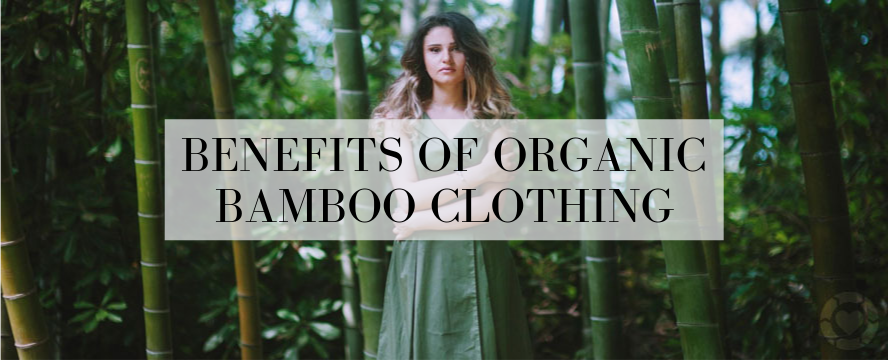Best News On Choosing Hemp Clothing
Wiki Article
What Are The Benefits Of Low Impact Hemp Fibre Clothing That Is Sustainable?
Clothing made from low-impact hemp fiber has numerous environmental advantages when compared with other clothing materials. This is the case for clothing made using synthetic fibers or traditional cotton. Hemp clothing is environmentally friendly. It is extremely fast growing and needs less water and pesticides. Hemp can adapt to different climates and soil types which means that it reduces the need for agricultural chemical.
Hemp is known to use less water than cotton. Cotton is, however, is known for its water-intensive nature. This makes hemp an eco-friendly alternative for clothing.
Hemp can be cultivated without synthetic pesticides, herbicides, or other chemicals. This minimizes the negative environmental impact of chemical agriculture.
Soil Health- Hemp cultivation can improve soil health because of the deep roots system, which can help prevent compaction and soil erosion. Hemp cultivation also enhances the soil for future crops.
Biodegradability Hemp fibers are naturally degraded and biodegradable over time. In contrast, synthetic fibers like polyester are able to decompose in a matter of hundreds of years.
Low carbon footprint - Hemp fibers have a smaller carbon footprint than synthetic materials. Furthermore, hemp is able to capture carbon dioxide from the atmosphere in its growth and act as a carbon sink.
Hemp clothing's durability as well as its longevity is well-known. Hemp clothing that is of the highest quality will last for a long time. This means that there is less necessity to replace it often and waste.
Hemp plants exhibit natural resistance to various insects. Chemical pest control is not necessary.
Hemp is a versatile fabric which can be transformed into clothing, bags or accessories.
Regenerative Agriculture: Some sustainable farming practices incorporate hemp into regenerative agricultural systems that seek to improve and restore the ecosystem while also producing crops. This method could be beneficial to the environment.
It is important to remember that, while hemp can provide numerous environmental advantages The sustainability of clothing also depends on a variety of factors, including dyeing processes, transportation and consumer habits, for example. Also, like every other field, production standards and practices can vary. To ensure that you're getting the maximum environmental benefit, look for organic hemp clothing that is sustainable and organic. See the top rated hemp clothes url for site examples including hemp mens jeans, hemp shorts mens, hemp tees, mens hemp t shirts, hemp sweater, hemp dress, hemp mens jeans, hemp jacket, hemp boxer shorts, clothes made from hemp and more.

How Can Hemp Fibers Benefit In Carbon Sequestration Sustainability, Crop Rotation?
Hemp fibers are a green choice for both agricultural and textile production. They are a great option for carbon sequestration and sustainability.
Hemp is a very fast-growing plant that is extremely fast-growing. It is able to mature in as little as 70 to 120 days, depending upon the type of plant and the conditions. In its rapid growth phase, hemp plants absorb carbon dioxide (CO2) from the atmosphere through photosynthesis. This carbon uptake may be a significant factor in the carbon dioxide sequestration, reducing levels of CO2 in atmosphere.
The high amount of biomass produced by hemp is well known. The plant's dense and tall foliage generates a large quantity of organic substances. When this biomass is integrated in the soil or utilized in various ways and uses, it could aid in the accumulation of organic carbon within soil, further securing carbon.
Sustainability:
Low Chemical Use- Hemp cultivation often requires fewer synthetic herbicides and pesticides as than other crops, like cotton. The natural resistance to diseases and pests reduces the need for chemicals. Organic hemp farming, in particular promotes sustainability by not using synthetic chemicals at all.
Hemp has a high water-efficiency particularly when compared to other crops that require a lot of water, such as conventional cotton. This helps hemp to be more viable in areas with scarce water resources.
Soil Health- The deep root system can improve soil health. Its roots can help stop soil erosion by stabilizing the soil's structure and reducing runoff. Hemp cultivation also improves soil fertility by increasing soil microbial activity.
Hemp may be included in crop rotation. Crop rotation involves alternating different crops within the same area over time. This practice could help break the cycle of diseases and pests and reduce soil loss and improve soil structure. The role of hemp in crop rotation helps to ensure sustainability.
Crop Rotation
Hemp can also be added to crop rotations alongside other crops like grains, legumes, or vegetables. Diversification is important for maintaining soil health, decreasing the threat of pests and diseases that are specific to particular crops, as well as promoting balanced nutrient cycle.
Hemp's roots that are deep can penetrate soils and aerate them and reduce compaction. This also improves the water infiltration. The soil's structure improves following the harvest of hemp, which benefits other crops.
Summary Hemp fibers can positively impact soil quality, they are suitable for crop rotation as well as enhancing carbon sequestration as well as sustainability. They do this through rapid growth, biomass, minimal chemical use, water efficiency and their compatibility with crop-rotation systems. These characteristics make hemp cultivation an environmentally sustainable and regenerative agriculture practice. Furthermore, the resultant fibers are a green choice for textiles and other uses. See the most popular find about hemp clothing for blog examples including hemp trousers, hemp and cotton fabric, hemp denim, hemp dress, hemp clothing wholesale, hemp baja hoodie, hemp tees wholesale, hemp pants mens, hemp long sleeve shirt, hoodlamb coat and more.

What is the difference between bamboo and hemp fibers?
Both hemp and bamboo fibers are plant-based fibres used to create textiles. Each one has distinct properties and characteristics. These are the major distinctions between hemp and bamboo fibers. Plant Source-
Hemp Fibers- Hemp fibers are made from hemp stalks, and more specifically, the outer bast. Hemp has been utilized for many purposes over the years. Hemp is a fast-growing and adaptable plant.
Bamboo Fibers- Bamboo fibers come from the pulp. Bamboo is a grass that grows quickly and is known for its durability.
2. Fiber Characteristics
Hemp- Hemp's fibers are strong and durable. They are among the strongest natural fibres, and they become softer after each washing. This makes them suitable for durable textiles.
Bamboo Fibers- Bamboo fibers possess a silky, soft texture. They may be more fragile and less resilient than hemp fibers, however they are still valued because of the softness they offer against skin.
3. Texture and Feel
Hemp Fabric- Hemp is a material with a texture and a more coarse feel in its original state. While it can be an extremely comfortable fabric, its texture is distinct from bamboo.
Bamboo- Bamboo fabric feels soft, silky and luxuriously soft. It is described as having a soft soft, and a cottony feel. It's extremely comfortable.
4. Dryness and Breathability-
Hemp- Hemp fabrics are naturally wicking away moisture. This enables more air circulation, and they also absorb water. They can help keep you cool in hot weather.
Bamboo Fibers- Bamboo fibers are known for their the highest degree of breathability and moisture wicking. They're also equipped with micro-gaps, which increase their capacity to regulate the temperature and moisture.
5. Environmental Impact-
Hemp Hemp is a fiber which is considered green due to the fact that it requires very little water, grows rapidly and has a great resistance to pests. It also lowers the use of herbicides and pesticides. Hemp can also eliminate carbon dioxide from the air when it grows.
Bamboo- Bamboo is famous for its long-lasting nature. It is fast growing, requires little water, and doesn't need synthetic pesticides. Some bamboos are considered sustainable, like Moso bamboo.
6. Processing-
Hemp Fibers- Hemp fibers undergo extensive processing, which will be required to separate the bast that is outside from the inner wooden core. The process may require decortication, retting, or mechanical separation.
Bamboo The bamboo fibers are extracted using a chemical known as the viscose or rayon process. Bamboo pulp is degraded using chemicals. This process could be harmful to the environment if it is not managed in a responsible manner. However, certain bamboo fabrics use closed-loop systems that minimize the waste of chemicals.
7. Versatility-
Hemp- Hemp fibres can be used for a variety of purposes, such as clothing, textiles and paper. They are also great construction materials.
Bamboo- Bamboo is typically used in the production of clothing and textiles. However, it could also appear in other products including towels and bed linen.
Both hemps and bamboos offer benefits in terms of sustainable and distinctive qualities. Select between bamboo and hemp based on the qualities and properties that you're looking for and your environmental preferences. Check out the best bamboo clothing info for website advice including bamboo fibre clothing, bamboo fitness clothing, kyte pajama, bamboo yoga clothing, organic bamboo pajamas, bamboo twirl dress, bamboo tank tops, bamboo twirl dress, bamboo boxer shorts, bamboo long sleeve shirt and more.
